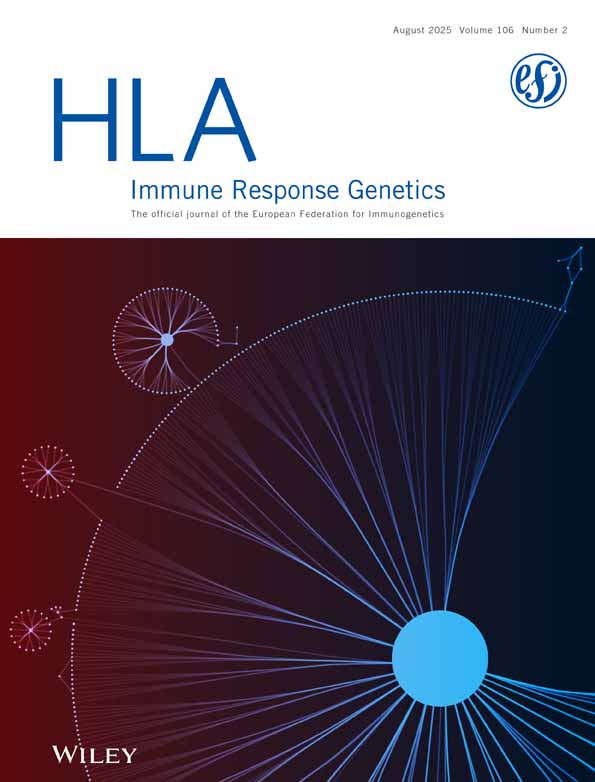HNA-1a, HNA-1b, and HNA-1c (NA1, NA2, SH) frequencies in African and American Blacks and in Chinese
Abstract
The granulocyte antigens HNA-1a, -1b, and -1c (formerly named NA1, NA2 and SH) which reside on the neutrophil FcγReceptor IIIb (FcγRIIIb) play a major role in immune neutropenias and pulmonary transfusion reactions. In an attempt to shed some light on the origin and history of these antigens we typed the DNA of Blacks from South Africa (n=99), and Ghana (n=27), of 56 African Americans, and of 138 Chinese from Taiwan for HNA-1a,-1b, and -1c antigens using polymerase chain reaction with sequence-specific primers (PCR-SSP). In African and American Blacks, the HNA-1b antigen was more frequent than HNA-1a (77 vs. 67% and 77 vs. 59%, respectively). In contrast, in Chinese HNA-1a was more frequent than HNA-1b (91 vs. 54%). We observed 3 individuals with FcγRIIIB deficiency among the 126 tested African Blacks indicating a higher frequency of FcγRIIIB deficiency in Blacks than the reported 0.1% in Europeans. In addition, the frequency of HNA-1c in African and American Blacks (38 and 23%, respectively) was higher than the reported 5% in Europeans. Among the 57 HNA-1c (+) Blacks, all were HNA-1b (+) but only 26 were HNA-1a (+) supporting the idea that the HNA-1c antigen is the result of an additional point mutation in the allele coding for HNA-1b. Recently, HNA-1a, -1b, and -1c (+) Europeans have been reported to have three distinct FcγRIIIB genes. Among 26 Blacks who had been typed HNA-1a,b,c (+) by PCR-SSP we identified only 7 having three FcγRIIIB genes by DNA sequencing. When we sequenced the DNA of 6 HNA-1a,b,c (+) Europeans we found 4 of the individuals had three FcγRIIIB genes. Therefore, we assume that in Africa the point mutation occurred first in the HNA-1b allele resulting in the HNA-1c allele and the FcγRIIIB gene duplication took place later.




